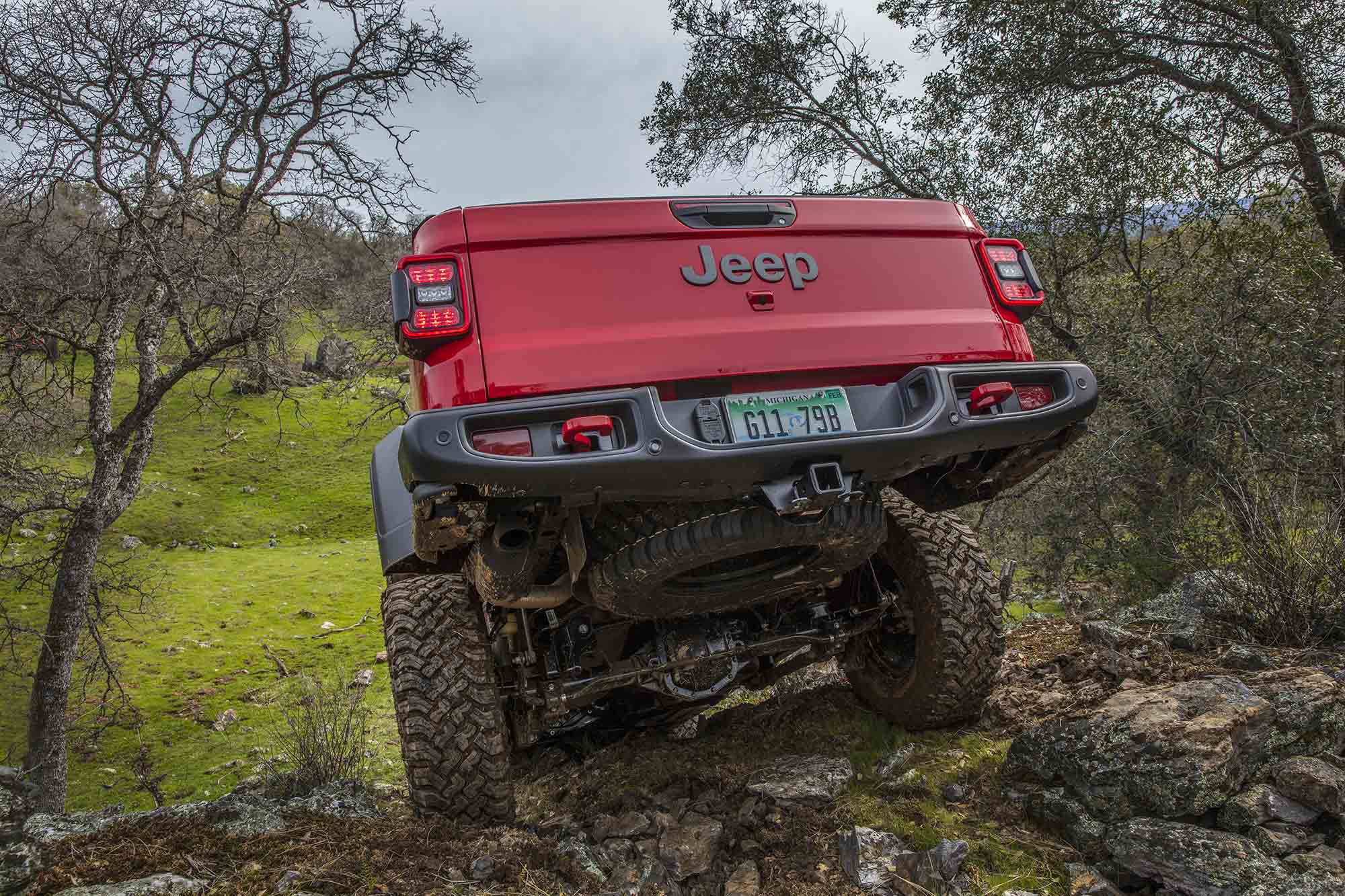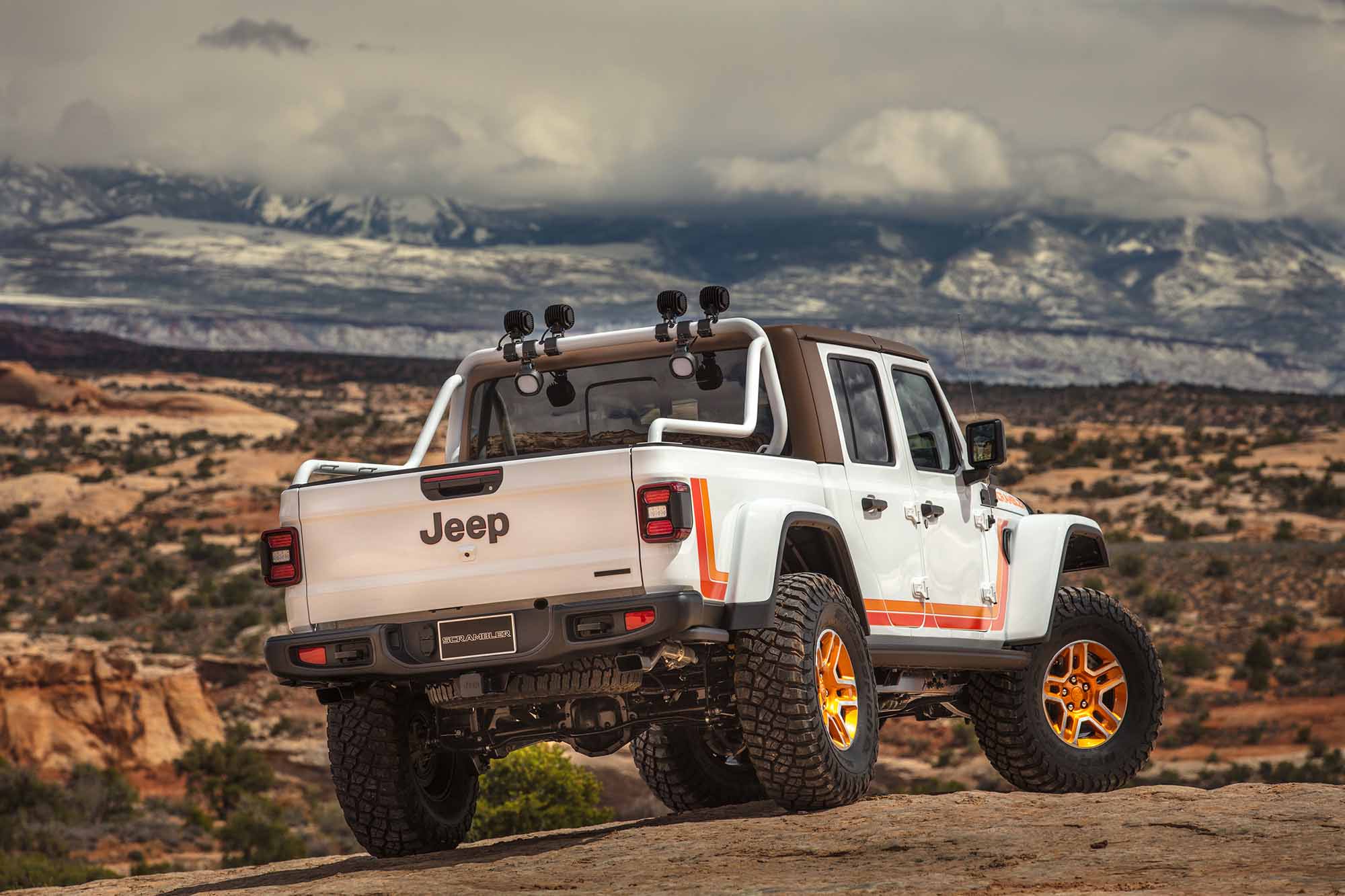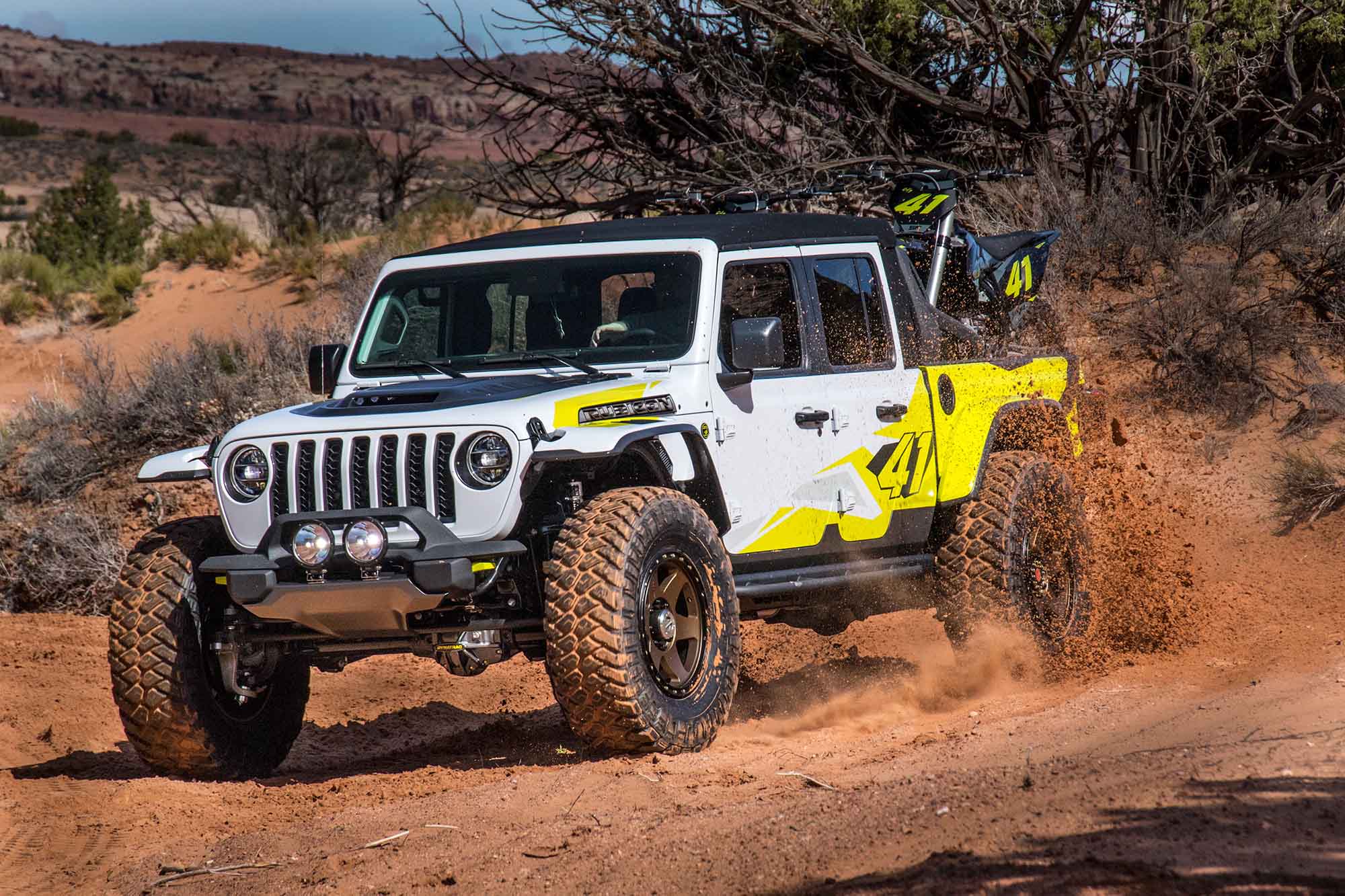
What Tires Fit On The Jeep Gladiator JT?
If you’ve got a 2020 Jeep Gladiator, you’re likely already itching to lift it and install larger tires. The Jeep JT pickup is built with modifications in mind and it has rather smallish tires from the factory. Don’t get us wrong. It’s not that the tires are small by OE standards. But instead, the wheel wells look as though they could easily fit larger than stock tires.
If you’re starting with a Gladiator Sport or Sport S model, it comes with 245/75R17 tires, which are 31.5 inches tall. The Overland model features nearly the same suspension and body bits as Sport and Sport S models. But it comes with slightly larger 255/70R18 tires that measure out to about 32 inches in diameter. The JT Rubicon features 285/70R17 tires that measure out to just under 33 inches in diameter. To fit the larger OE tires, the Gladiator Rubicon features factory-raised fender flares, wider axles, and a slightly different suspension.
Even more confusing is the Sport and Sport S models are available with the optional Max Tow package. It includes Rubicon-width axles front and rear. This feature can help with larger tire fitment because it pulls the tires and wheels away from the frame and suspension. Keep your Jeep’s trim level and options in mind when matching tire diameter, wheel backspacing, and lift kit height. Of course, what tire fits often depends on the use of the Jeep and how much tire rub you are willing to put up with. We’ll guide you down the more conservative path to avoid tire rub on-road and off-road in most cases.
The JT Gladiator Rubicon has a slightly different suspension, wider axles, and raised fender flares with larger wheel openings to allow for the factory 33-inch diameter tires. These factory Rubicon fender flares or aftermarket raised fenders can be easily added to the JT Sport and Overland models to help fit bigger tires.

Fitting 33-inch Tires On A Gladiator
The factory JT Rubicon 285/70R17 tires measure out to nearly 33 inches in diameter. Although with a width of about 11.5 inches, they are slightly narrower than a traditional 33×12.50 flotation-sized tire. In most cases, the 285/70R17 can be fitted to Sport and Overland models using the factory 17×7.5 wheels. Gladiator Sport models with the Max Tow package will have an easier time fitting slightly wider tire and wheel combos.
Extra-wide 33-inch tire and wheel combinations could lead to tire rubbing on all models without a lift or fender trimming. You have a few options when fitting 33×12.50 flotation tires on a Sport or Sahara model. The simplest route is to remove the factory fender flares and replace them with aftermarket raised or high-top fenders. Several different aftermarket fender flare versions are available for your styling preferences.
If your Gladiator Sport doesn’t have the wider Max Tow axles, you may need to add wheel spacers or select new wheels with backspacing around 4.5 inches. The advantage of avoiding a lift and sticking with 33-inch tires is that the handling and ride of your Jeep will not change much. The factory suspension can remain unaltered.
Another option for Sport and Overland owners is to install a 1.5- to 2-inch leveling kit or suspension lift with the stock fenders. You can use coil spacers that retain the factory coil springs, shocks, ride, and handling. If you are an aggressive driver, consider going with lift kits that come with new coils and performance shocks. These kits are typically better able to handle the bumps.

Much like the JL Wrangler Rubicon, the JT Gladiator Rubicon can fit 35-inch tires stock. But if you plan to take it off-road, you’ll likely want a 2-inch lift to keep the tires from rubbing. Sport and Overland models will benefit from the installation of aftermarket high-clearance fender flares at all four corners along with a 1-2-inch lift when fitting 35-inch tires.
Fitting 35-inch Tires On A Gladiator
Much like the Wrangler Rubicon, Jeep engineers designed the Gladiator Rubicon to handle the added stress of 35-inch tires. A 35×12.50 flotation tire will fit the stock Gladiator Rubicon suspension with minor rubbing when driven sanely on the street. Aggressive drivers and those that plan to take their JT Rubicon off-road will want to steer into at least 1-2 inches of lift. This can be accomplished with a coil spacer kit that retains the factory coils and shocks. Or with a kit that uses all new coils and shocks. As mentioned earlier, a spacer kit will generally ride smoother, which is nice if you spend a lot of time on the street. The suspension kits that include new coils and shocks will ride slightly firmer and allow for aggressive driving off-road.
If you have a Sport or Overland and want 35×12.50 tires, you could start with adding raised fender flares. Then follow the fenders up with a 1- to 2-inch lift. This route will help avoid the more complex suspension modifications required when using a larger suspension lift alone. Fitting 35-inch tires while retaining the stock Sport or Overland fender flares will require the use of a 2- to 3-inch lift. Sport and Sport S models will need to either have the bumper flare extensions trimmed or removed for clearance. Overland models feature a different bumper assembly with slightly more tire clearance.

A Gladiator Rubicon can house 37-inch tires in the factory wheel wells with a 2- to 3-inch lift. Proper bump stop location will be critical in keeping the tires from eating the inner fenders when the suspension is fully articulated.
Fitting 37-inch Tires On A Gladiator
With 37-inch tires having become the new 35, there is no shortage of Gladiator fans that want to step up to 37s. The good news is that the Gladiator Rubicon can 37-inch tires with a relatively small 2- to 3-inch lift. Properly located bump stops are also important. Keep in mind that the axle assemblies will be at their operational limit on 37-inch tires. It’s possible to keep the stock JT Rubicon axles alive with 37-inch tires on mild trails and mostly street use. But hitting more challenging trails on 37-inch tires will eventually require aftermarket axle upgrades or an axle swap.
The Sport and Overland can accommodate 37-inch tires with use of raised fender flares and a 2- to 3-inch lift. Correct bump stops are also needed. High-performance long-travel 3-inch and taller lift systems may require replacement of the OE CV-style driveshafts with traditional U-joint driveshafts. The wheel backspacing you need will depend on the lift kit you choose and the width of the tires. Most lift and tire combinations will require wheels with around 4.5 inches of backspacing.

Fitting 40-inch tires on a Gladiator requires lift kits in the 5- to 6-inch range along with Rubicon or aftermarket high-clearance fender flares. Smaller lifts are an option, but they will need extremely high-clearance aftermarket fender flares or significant fender trimming for proper tire fitment.
Fitting 40-inch Tires On A Gladiator
It’s been well accepted by hardcore enthusiasts that Gladiators just look right on 40-inch tires. If this is you, then you’re either sticking to the street or have 1-ton front and rear axles in your build plan. Or you’re okay with simply praying your axle assemblies don’t become an expensive mist of gear oil and flying steel bits off-road.
Successfully upping the ante to 40-inch tires is done by building the Jeep around the tires, instead of fitting the tires to the Jeep. The 40-inch tires will require 5- to 6-inches of lift with properly located bump stops and either Rubicon or aftermarket raised fender flares. Of course, shorter lifts are also an option. But you’ll need to pay special attention to bump stop location. And be willing to significantly chop and modify the fender openings for tire clearance at full suspension compression. Stronger aftermarket driveshafts will be mandatory when installing 40-inch tires, especially if installing a high-performance long-travel suspension system. Wider aftermarket wheels with around 4.5 inches of backspacing will also be necessary in most cases.




2